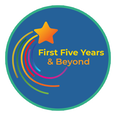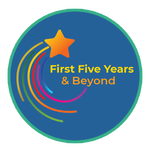the importance of toys and books in early childhood
Playing with toys is how children experience the world, practice new skills, and internalize new ideas, therefore it is essential "work of children" (Paley 2004). These new experiences children develop when playing with toys merge with old experiences they have, providing an expansive learning process. Through play, children learn about the world and engage in activities that encourage their cognitive, emotional, and social development (Elkind 2007). For example, when a child plays with a drum, they learn they can create sound. This is known as cause and effect!
Educators and caregivers can build on children's play by providing engaging toys. When a child expresses interests in animals, for example, a parent can leverage this by adding animal toys to blocks. Playing with blocks provides a foundation for learning how to problem solve, basic math and science concepts. Another way that toys can promote a child's cognitive awareness is to hide a toy under a scarf and play the classic game "peek-a-boo".
Early books are an excellent (and fun) way for children to discover and name objects, and learn that pictures represent real things. Thin paper books are not recommended for very young children because it can tear easily. You can even make your own book by gluing pictures of animals, every day objects or drawings onto pieces of thick cardboard, binding them together with yarn or glue. If you have fabric, this can be very interactive! Glue pictures of fabric or papers of different textures to the book so that the child can see, feel, and touch!
All families who enroll their child in our program and complete the ASQ-3/ASQ-SE or PFR will receive free books and toys from one of our family resource representatives.
Educators and caregivers can build on children's play by providing engaging toys. When a child expresses interests in animals, for example, a parent can leverage this by adding animal toys to blocks. Playing with blocks provides a foundation for learning how to problem solve, basic math and science concepts. Another way that toys can promote a child's cognitive awareness is to hide a toy under a scarf and play the classic game "peek-a-boo".
Early books are an excellent (and fun) way for children to discover and name objects, and learn that pictures represent real things. Thin paper books are not recommended for very young children because it can tear easily. You can even make your own book by gluing pictures of animals, every day objects or drawings onto pieces of thick cardboard, binding them together with yarn or glue. If you have fabric, this can be very interactive! Glue pictures of fabric or papers of different textures to the book so that the child can see, feel, and touch!
All families who enroll their child in our program and complete the ASQ-3/ASQ-SE or PFR will receive free books and toys from one of our family resource representatives.
Paley, V. 2004. A Child's Work. Chicago, IL: University of Chicago Press.
Elkind, D. 2007. The Power of Play: Learning What Comes Naturally. Reading, MA: Da Capo Press.
Elkind, D. 2007. The Power of Play: Learning What Comes Naturally. Reading, MA: Da Capo Press.

